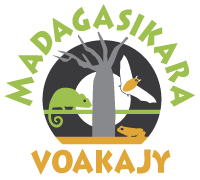From 24th to 28th March 2014, 54 leaders and members of 12 community-based organisations working with Madagasikara Voakajy in Moramanga and Ambatondrazaka districts got together to foster their engagement for conserving the unique biodiversity in their villages, part of the unique biodiversity of Madagascar.
https://www.madagasikara-voakajy.org/blog/a-week-to-consolidate-community-engagement-to-biodiversity-conservation-in-the-moramanga-district#sigProIda0c43c35b7
Day 1: Introduction
The workshop was opened by the head of the Cantonnement de l’Environnementet des Forêts in the Moramanga district. His speech focused on the roles of the community organisations in managing the new protected areas, and the support they can expect from Madagasikara Voakajy and the government. He also developed the steps that community-organisations should take to obtain the management rights transferred to them. This was followed by a presentation by Daudet Andriafidison, Community and Conservation Program manager at Madagasikara Voakajy. At the center of the discussion was a presentation of the deforestation history of theMangabe new protected area since 1993 and the projection for 2020 if no conservation measure is taken. By the end of the morning, we all affirmed our engagement to reduce deforestation rates and avoid the projected situation in 2020.
Day 2: How does a functional community organization managing a protected area look like?
This was the essential question in the two presentations given by Daudet Andriafidison. Two group discussions were then carried out. During the morning session, four groups were formed: the presidents, the treasurers, the secretaries and the members. Each group identified their responsibilities within the community organization and the issues they are facing when taking these responsibilities. Two major issues were identified: (i) responsibilities are not well understood amongst the leaders and (ii) members do not always participate in the community organization activities. In the afternoon session, each community organization formed a group to identify two main issues they are facing and actions they will take to solve these issues. Common problems: members do not turn up at meetings and do not pay the membership fee, therefore the community organizations have no source of income; Common solution: Madagasikara Voakajy should assist the leaders in running awareness campaigns and encourage members to fully integrate the organisations. Throughout the workshop, concrete actions that participants can take to improve interaction within and functioning of the community organisations were identified.
Day 3: How to improve livelihoods without damaging biodiversity?
How to improve livelihoods without damaging biodiversity? Over 90% of the population surrounding the Mangabe new protected area are farmers, whose main objective is to increase yields, their main source of income. Adopting improved farming techniques is a way to achieve this objective. During the workshop, we presented three such techniques: 1) production and use of composts, 2) beans cultivation and 3) chicken farming. All these themes were presented by Voahirana Randriamamonjy, Alaotra-Mangoro Region coordinator at Madagasikara Voakajy. Each technique was presented to the participants, followed by discussions. The key to the success of this day was the experiences shared by participants who have already adopted the techniques. These witnesses highlighted the feasibility of applying the techniques and the corresponding benefits.
Day 4: How to choose which project to implement and estimate the benefits?
This was the main question of the day. Two members of the women group from Ambatondrazaka district shared their experience in implementing a community project that can benefit to both the members and the community organization. This was followed by a presentation by Voahirana Randriamamonjy on basic planning and calculations that should be done by each individual and each organization before starting a project. In the afternoon, each community organization developed a project following the guidelines provided in the morning, assuming that they will have a start-up fund of Ar500,000 ($250)and they should be able to return this start-up fund by the end of the project.
Day 5: Evaluation and Conclusion
Each community organization presented their planned projects. Nine opted to carry out a bean cultivation project and two a chicken farming. They all learned from the Ambatondrazaka experience and will start up a common project. Seven community organisations could successfully follow the guidelines and estimated a net benefit of up to Ar1,564,750 (approximately $790) at the end of their project.
Next steps:
Back in the villages, the president of each organization and all the participants will call a community meeting to report what they have learned during the five days and review the project designed during the workshop;
The rewards each community organization will receive during the Mangabe festival planned for July 2014 will be used to implement the designed project;
At the beginning of the next cultivation season (from September), we will visit all the community organizations and as many participants as possible to evaluate whether or not and how they implemented the techniques learned during the workshop. This will also be an opportunity to provide further assistance where needed.
This workshop was kindly funded by the WWF Conservation Workshop Grants and Darwin Initiative. Chester Zoo trustees members were also present. To donate for this project, please follow this link: http://www.sizeofwales.org.uk/projects/new_protected_area.html.



